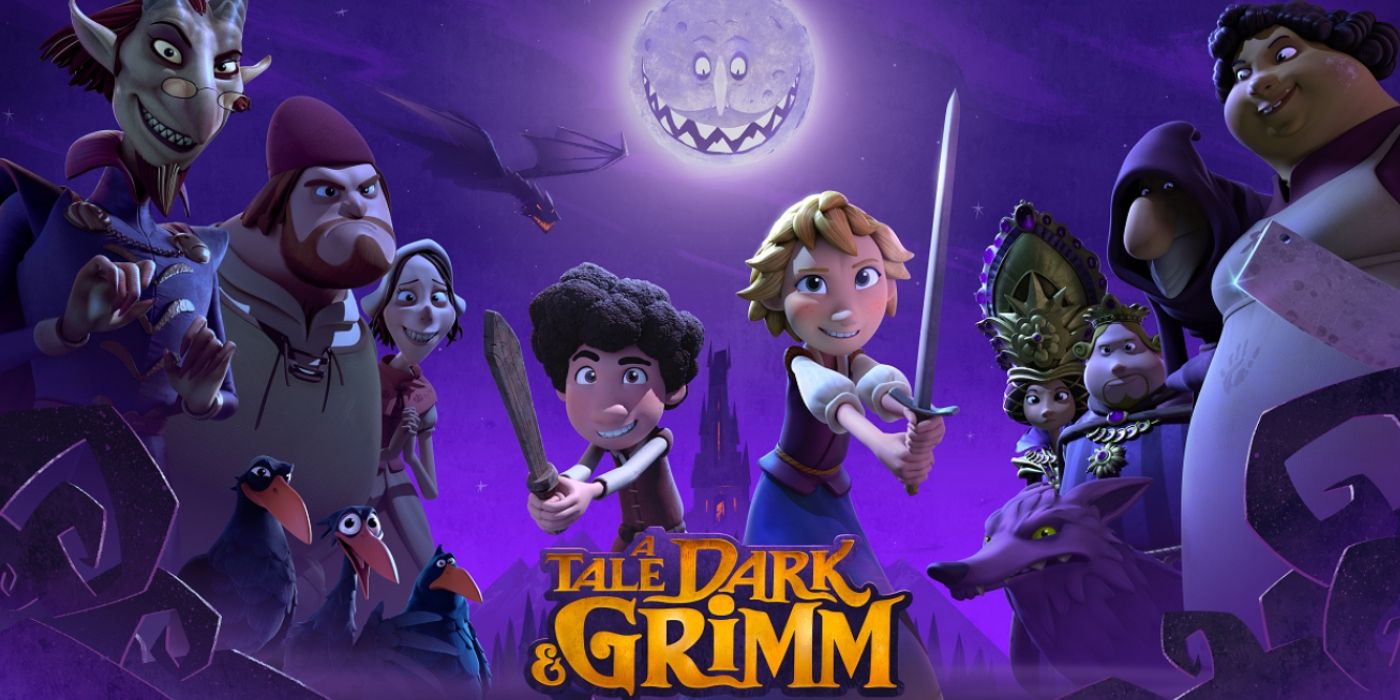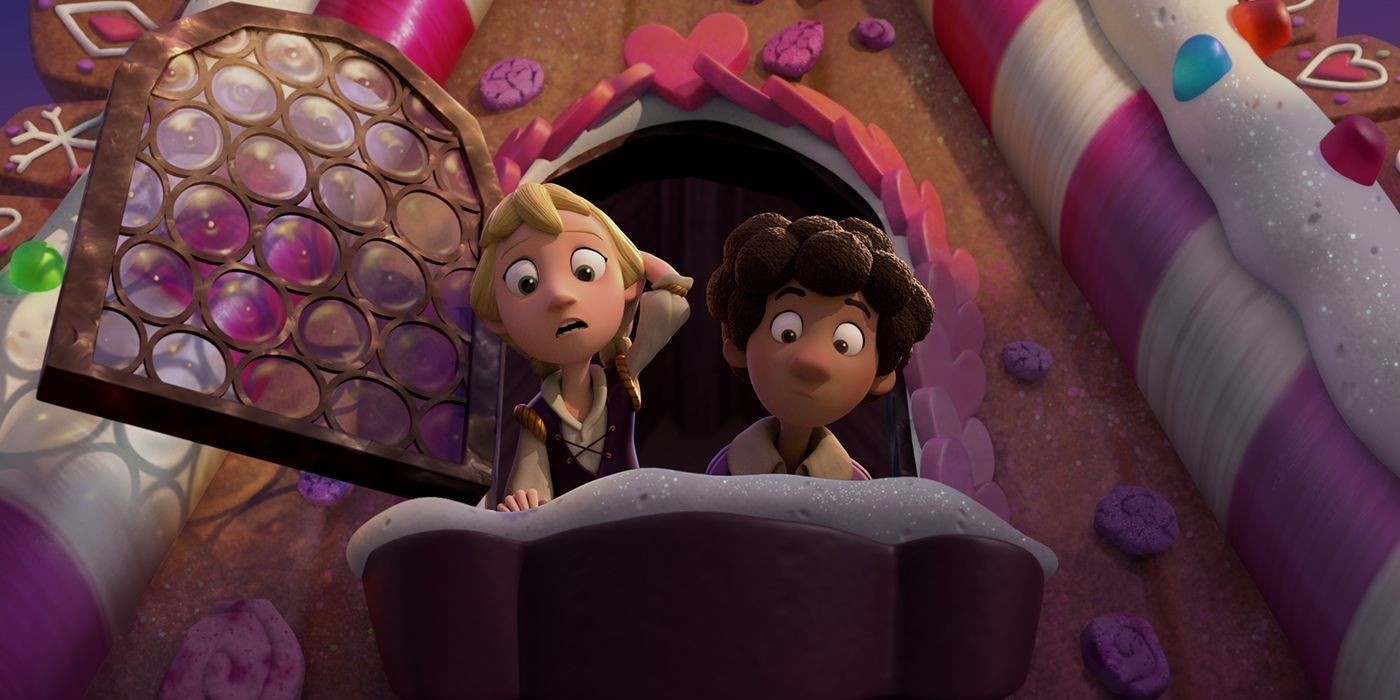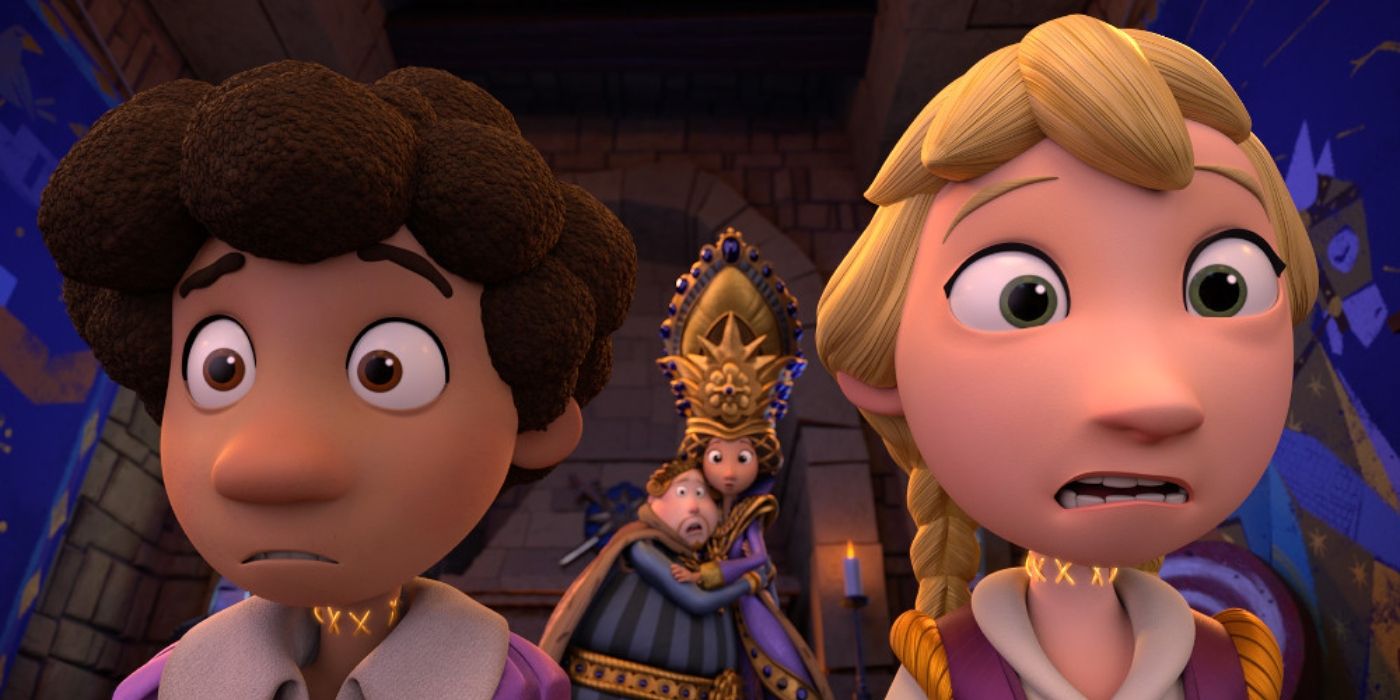A Tale Dark and Grimm by Newbery Honor awardee Adam Gidwitz is a series of children's books that reimagine the classical world of fairy tales with a subversively funny edge. Gidwitz's vision is now coming to life on Netflix. The television adaptation lends a deft mix of grim comedy and stylized animation to the beloved series. A Tale Dark and Grimm focuses on Gretel and Hansel as they make their way through a mystical realm and contend with several uniquely dark takes on classic fairy tales and folklore.
Ahead of the show's Netflix debut on Oct. 8, CBR sat down for an exclusive interview with Executive Producer/Director Simon Otto and series' stars Raimi Rodriguez and Andre Robinson. The team discussed the most surprising aspects of adapting A Tale Dark and Grimm and shared how they reinvented classic fairy tale characters for a new generation.
CBR: Even outside the series being based on a specific series of books, these characters are largely timeless. What's it been like to put your own stamp on these classic stories?
Simon Otto: I think what we were all really fascinated about is that the take that Adam Gidwitz has. We had the privilege of actually talking to him and hearing his story of how this whole thing came about, which was basically he was a substitute teacher and was asked, "Can you just jump in, all you need to do is read the story to the kids?" He said, "Oh, there's this big, old fat book that is called Grimm's Fairy Tales. It's probably a good idea to read that to the kids." As he was reading it, he started interrupting reading it and undercutting it.
In doing so, he discovered that the essence of the stories is really valuable and the characters are exciting. In its unsanitized version, kids really get drawn in, particularly when you then undercut it with humor and sort of ask the question like, "Well, that was weird. Their heads just got chopped off!" Like, "Isn't that great?" It must have meaning because these stories go 200 years back. Before that, there were folk tales that got verbally passed on from generation to generation. The Grimm brothers took it upon themselves and created really strong narrative stories out of them.
What Adam eventually chose to do was, "Why don't we take one overarching novel approach and take Hansel and Gretel onto a journey where they experience a multitude of these fairy tales?" Basically, we replace the heroes of those stories with the same characters rather than going into individual stories. For me, coming from feature animation, we've oftentimes attempted to adapt fairy tales, and some of them, particularly Disney, did very well with them. But some of these stories are so absurd and strange that in a way you almost can't make a feature film out of it. And this new opportunity that we have with a series like this actually allows you to tell some pretty odd stories because you now have time to either put it in an episode or arc it over multiple episodes. So that was the fascinating part for me.
Raimi Rodriguez: Yeah. It's really, really cool to be able to take a story that's very well known and take out some of the other characters and just smack dab, Hansel and Gretel right in the middle of it. All these adventures that they get to go through -- there's so much that happens. Between this brother and sister duo, them sort of trying to find themselves, run away from home but find out what home means to them and what all that entails and going through all these different adventures with other characters and getting to have all that different kinds of fun. I'm really excited for kids to see it. It's funny, because it is like the classic fairy tales that you know and love, but a little bit grimmer, in a little bit more original way, than some of them would be told.
Andre Robinson: This show, it's fun. It's for kids, but it has like that little dark edge that gets you over. That's why I think it's for everyone because I think families are going to enjoy it. The jokes are hilarious. The scares are amazing. Like each episode I ever did, I had so much fun doing it. It's really good.
This series does openly embrace that slightly darker edge to these original stories. What do you think it is that attracts younger audiences to scarier material?
Otto: What I think is interesting... I think it's a little bit where they think they're not supposed to see it, not supposed to hear about it, but in a way, they're interested. They'd like to find out because kids themselves have complicated emotions. It's not all sanitized. Their lives are not sanitized. There are things that that are complicated for them and I think being drawn to things that maybe they feel like is not quite appropriate for them, even though in our case, I think we're managing that very well. There's this line of what's appropriate, what's not appropriate, and our goal was always: we want to scare the kids, but we don't want to scar them.
So our raven narrators allow us always to just at the right moment, they're holding their hands. They're bringing in humor. They give it a little sense of '"it's just a story." When in fact we also play with that idea, is it a story? Is it real? Are they reliable narrators? Because sometimes they correct each other's storyline... So you get a sense that you basically are allowed to go along as long as you feel comfortable and then just kind of dismiss it if you don't. But I promise you, we never cross the line.
Andre and Raimi, you both didn't get to record with one another in the same room, but the characters have such a fun rapport that's clearly tied to your performances. What was it like to have the other to bounce off of?
Rodriguez: Andre and I hit it off right away. I think we got to meet each other via Zoom. And then what would happen is we would follow each other on Instagram. Andred was like, "I'm sending you a message right now." Not only are we recording, but then we're DMing each other throughout our recordings as well. And, in between recording, we would talk.
Robinson: Besides the script, we like to put little dots or little key points that a brother and sister would say, so I would be adding stuff and it felt real. And I think Simon was like, "Are we recording this?"
Otto: The little breaths, the little giggles, the stuff that feels really natural. That's an animator's dream because you craft something beyond the line. We were always looking out and hunting for those things. In editorial, we puzzle it together in a way that feels really natural. Not only does it add to their performances, but because there is a natural kind of --even though they're twins in the story -- dynamic of an older sister, younger brother... It's an interesting dynamic. I think that permeated into the episodes and it helps us create the art for the characters.
What would you say were the most surprising elements of the show for you?
Rodriguez: I got to sing. I got to cry. I got to do primal animal screams out to the void. Gretel really goes through it all. On top of the comedy and the family relationship, Gretel herself grows so much throughout the series. When we come in, they're young, they're youthful, they're innocent in the beginning. And then their voices adapt and change as they go because they themselves are adapting and changing as they grow -- so their voice might get tougher. They might get harder. They might not be as reciprocating to feeling so quickly because they don't know if you're being honest or you're not being honest, or they don't know who to trust. It was a nice journey. Not only as Gretel but as Raini got to do as the actress, bringing that character to life.
Robinson: I actually loved it because for Hansel, as a kid who's going through all this... First of all, his head gets chopped off. So like, "What the heck?" So now he's thinking his parents are betraying him, but at the same time, he doesn't want to leave his safe place. But so he needs his sister to kind of like, "Okay, you realize your head just got chopped off, right? We need to dip. We need to get out of here." So as that story, as they're leaving and trying to find a new home, Hansel gets a little bit tougher, realizing that, "Hey, your sister's been protecting you for so long. Now it's time for you to stand up and protect someone you love." And so, as he's going through these emotions, he gets himself in a lot of trouble.
Otto: It was absolutely exciting to be diving into this world, knowing from the get-go what we wanted to, and we really wanted to bring out the essence of Adam Gidwitz and his novel. Basically, by default, we needed to find ways to produce a roadshow film, which in animation is difficult because generally what you do in episodic television you come back to the same set. Our story is a journey and a giant road trip around this world. So what we needed to find was we needed to find a way to do this. And then on top of that, we wanted to lean into this unreliable narrator thing. And best way to do that is that we have various degrees of realities
When we're really in the story, it's fully fleshed out and it's a three-dimensional world, and the flat parts of what we painted are pushed into the background. When the raven tells -- let's say a backstory and it's not quite accurate or when they really pull the plug on a story and say -- "Well, that's way too scary." So we're going to show it to you, but tastefully. We can flip into it but we interpret it as a stage play. It's almost like a few people pull some ropes and the backgrounds get pulled up and that sets the tone for what the show will do visually, which is it's coming in and out of these different worlds and allowing us to tell a vast story.
A Tale Dark & Grimm, starring Raini Rodriguez, Andre Robinson, Scott Adsit, Ron funches, and Erica Rhodes, comes to Netflix on Oct. 8



